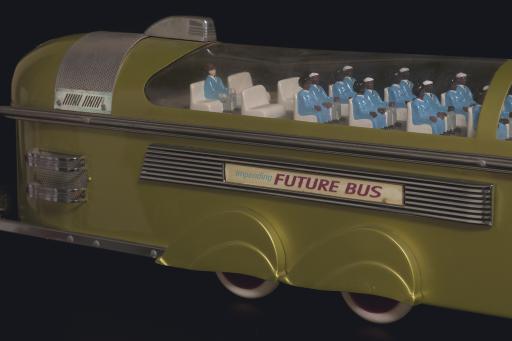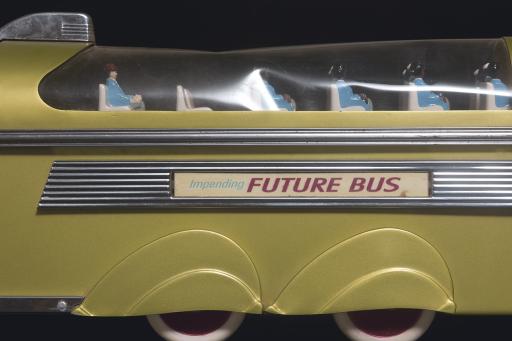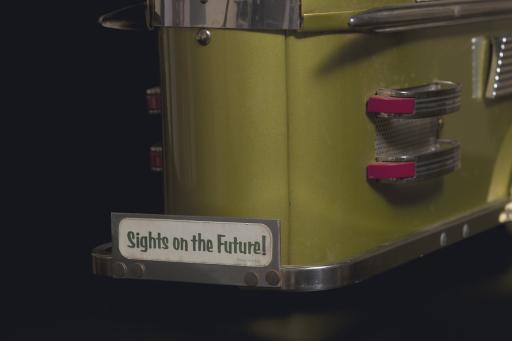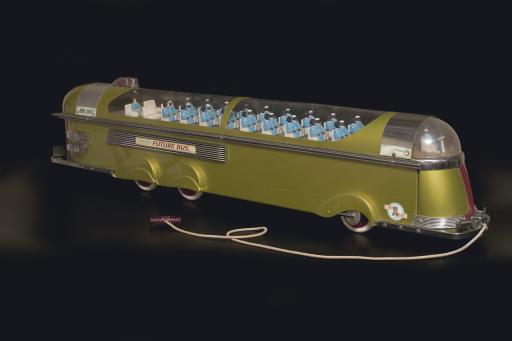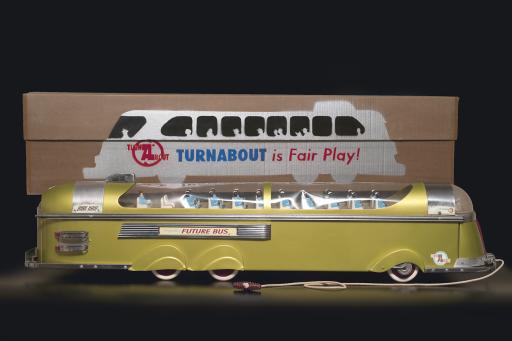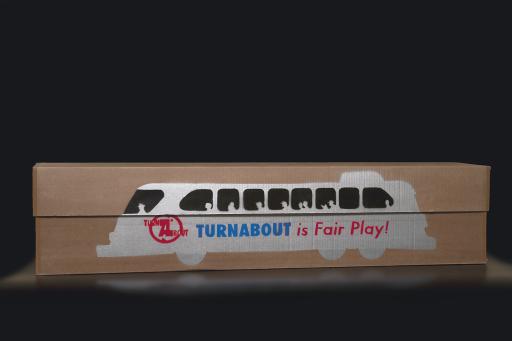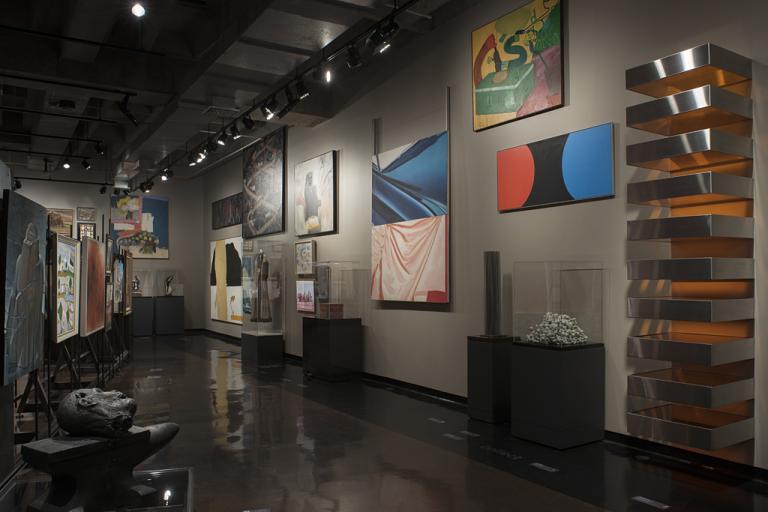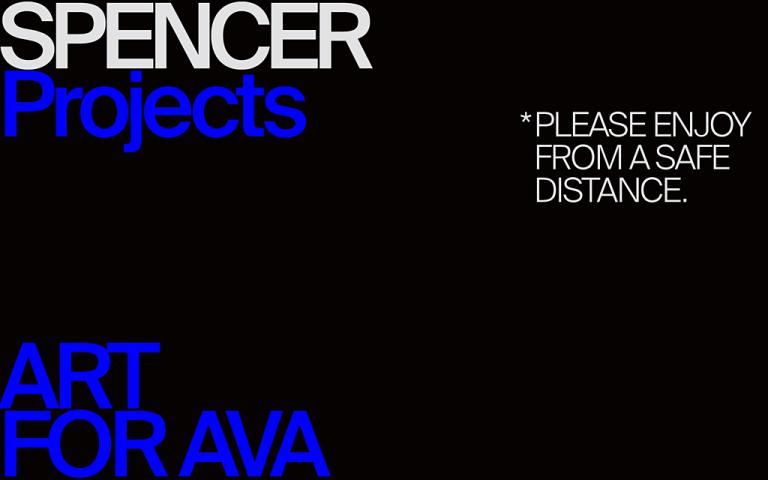Impending Future Bus, Randy Regier
Artwork Overview
Randy Regier, artist
born 1964
Impending Future Bus,
2004
Where object was made: United States
Material/technique: mixed media; steel; cast plastic; acrylic urethane
Dimensions:
Object Height/Width/Depth (Height x Width x Depth): 27.9 x 17.8 x 132 cm
Object Height/Width/Depth (Height x Width x Depth): 11 x 7 x 52 in
Object Length (Length): pull cord 120.5 cm
Object Length (Length): 47 1/2 in
Object Height/Width/Depth (Height x Width x Depth): 27.9 x 17.8 x 132 cm
Object Height/Width/Depth (Height x Width x Depth): 11 x 7 x 52 in
Object Length (Length): pull cord 120.5 cm
Object Length (Length): 47 1/2 in
Credit line: Museum purchase: Peter T. Bohan Art Acquisition Fund
Accession number: 2010.0003.01
Not on display
If you wish to reproduce this image, please submit an image request

